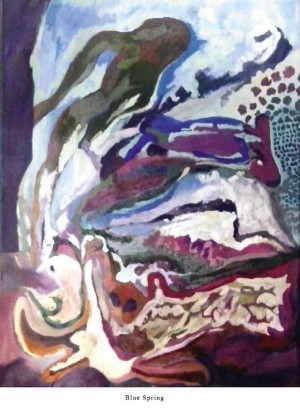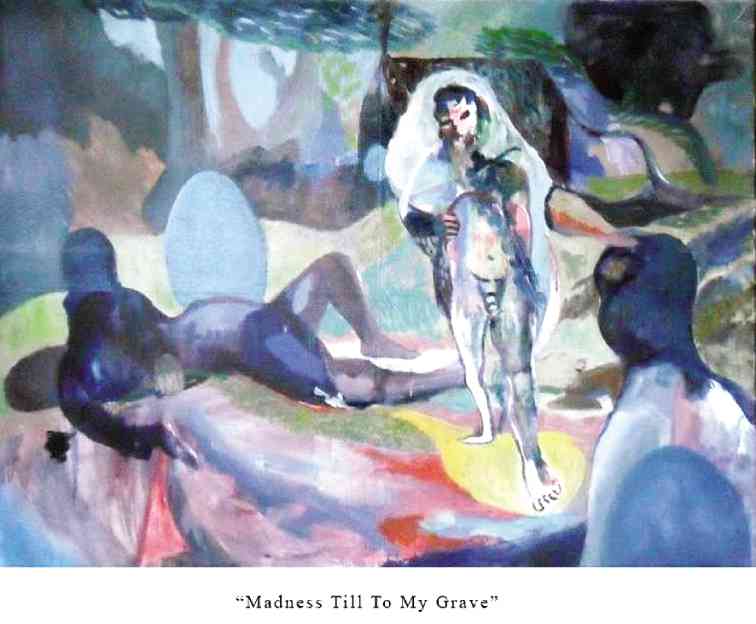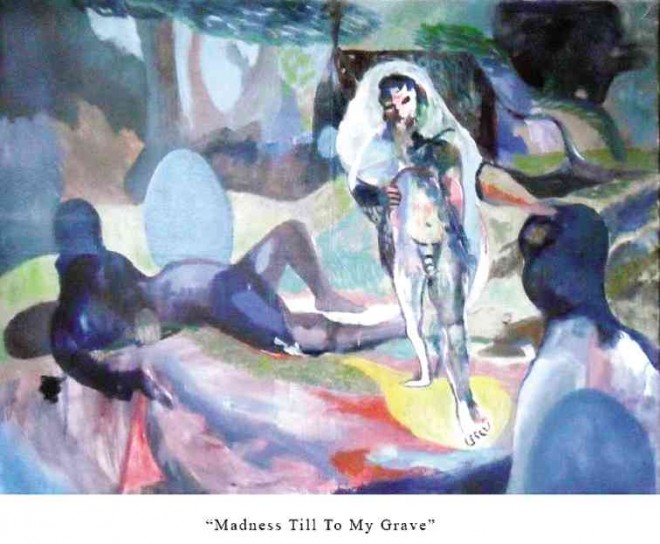Never mind that our tropical paradise seems to be in a state of perpetual summer. Indeed, even the rude intrusion of the monsoon weather can only be welcomed as a soothing respite from the oppressive heat. But in the hearts of poets and painters, regardless of their origin from what tropical or temperate zone, spring is more than just a season. It is symbol and metaphor; an awareness of endings and beginnings; redemption from dark despair. Only then do we realize what the words of the poet Pablo Neruda meant: I want to do with you what spring does with cherry trees.
Undoubtedly possessed of a poetic spirit is Bacolod City-born and Davao City-based artist Rodney P. Yap, whose solo show at Altro Mondo Gallery, titled “Spring Transcending,” kindles memories of his own personal spring, a private vision harkening back to an Eden where, despite the luxuriant blossoming of flowers and greening of trees, a worm curls warmly hidden at the apple’s core.
Casting a roving eye on a sempiternal paradise, Yap unleashes a plethora of universal themes: love and desire, fear and fertility, vengeance and violence, battlefields and Biblical exhortations, misery and madness. In a world of good and evil, spring is man’s awakening and rebirth. It is life triumphant after the dead of winter.
Narrative
What drives these paintings is the narrative that is directed toward enlightening the images. It is the pivot that engenders the eroticism and the violence of the works. Literary paintings have always been suspect by certain critics—after all, the medium is visual. If the story should, alas, elude the viewer, the painting would have neither anchor nor armature to stand or hang on. It is imperative therefore that the painting be conceived with its own structural integrity or else collapse as mere rickety illustration. Aware of these risks, Yap aligns himself with the art movement called Symbolism.
Albert Aurier, in extolling the works of Gauguin, defined Symbolism as “the subjective vision of an artist expressed through a simplified and non-naturalistic style.” Yap’s works rejoice in the classic elements and qualities of Symbolist paintings: “imaginary dreamworks populated with mysterious figures from Biblical stories and Greek mythologies as well as fantastical, often monstrous, creatures.” Aurier considered these pervasive themes in Symbolist art: love, fear, anguish, sexual awakening and unrequited love. “Woman became the favored symbol for the expression of these universal themes.”
Interestingly, Yap mines his own personal history and mythology, anguish and fears, thereby engaging the artist in a kind of confessional articulation with the viewer. The linkages of

narratives to Yap’s life invests his works with a purposefulness and sense of direction that trigger an unconventional composition which the artist manipulates in pictorial space unbidden by prior studies or sketches.
Several works are uncannily exaltations of existence that bring to mind Matisse’s iconic “Joy of Life.” Yap’s version of Arcadia celebrates the joy of spring, which, as the artist himself proclaims, “is not confined to just the season. It is everything man conceives in his mind.”
Tantalizing
Tantalizing is the concept that the original Eden belonged to Adam and not just to one Eve… but to several Eves. Thus, in the works “Women in Trees” and “Two Women and a Man,” several Eves symbolize man’s various needs beyond the physical, such as the spiritual, psychic and aesthetic.
Spring, of course, heralds fertility—what Neruda’s spring will do to the cherry trees— and a new generation. An expectation of a new life, a new beginning, is why man cherishes the season, and the idea, of spring. Works like “Waiting,” “Coming Soon,” “Pollinating” and “Bearing” advert to the fruition of man’s relationship with woman who is Nature personified.
As in the original Eden a snake resides, portending evil and the Fall of Man. So, too, in Yap’s realm where memories of disturbance, devastation and death haunt the artist. In “Sunbathing” the artist pays homage to Davao’s Garden City of Samal, where, in a cave in the island, swarm a multitude of fruit bats. Ominous is “The Partisan,” where a man, at the crossroads of his life, must decide to commit himself to an ideology. Describes Yap: “He sits overlooking the carnage that happened before his eyes. The group was ambushed by its enemy. And there lies the body of a victim under the searing sun.”
Of all the works in the show, Yap relates personally to “Madness Till My Grave.” In his stark nakedness, the artist proclaims his own madness, from which neither religion nor any other belief could deliver him. Indeed, creativity itself could be a kind of madness, stirring man to a fevered activity of creation. The late novelist Truman Capote had compared creativity to a whiplash given by God to man to scourge himself.
A multiawarded artist, Yap graduated with a major in Fine Arts from the Ford Academy of the Arts in Davao City. He was a regular regional winner, representing Mindanao, in the Philippine Art Awards. Last year he exhibited his “Primeval” series at various galleries in Poland and in Berlin, Germany. He participates actively in art fairs in Manila, Singapore, Korea and Hong Kong.
Yap vows to “spring” more surprises in the coming years.










































